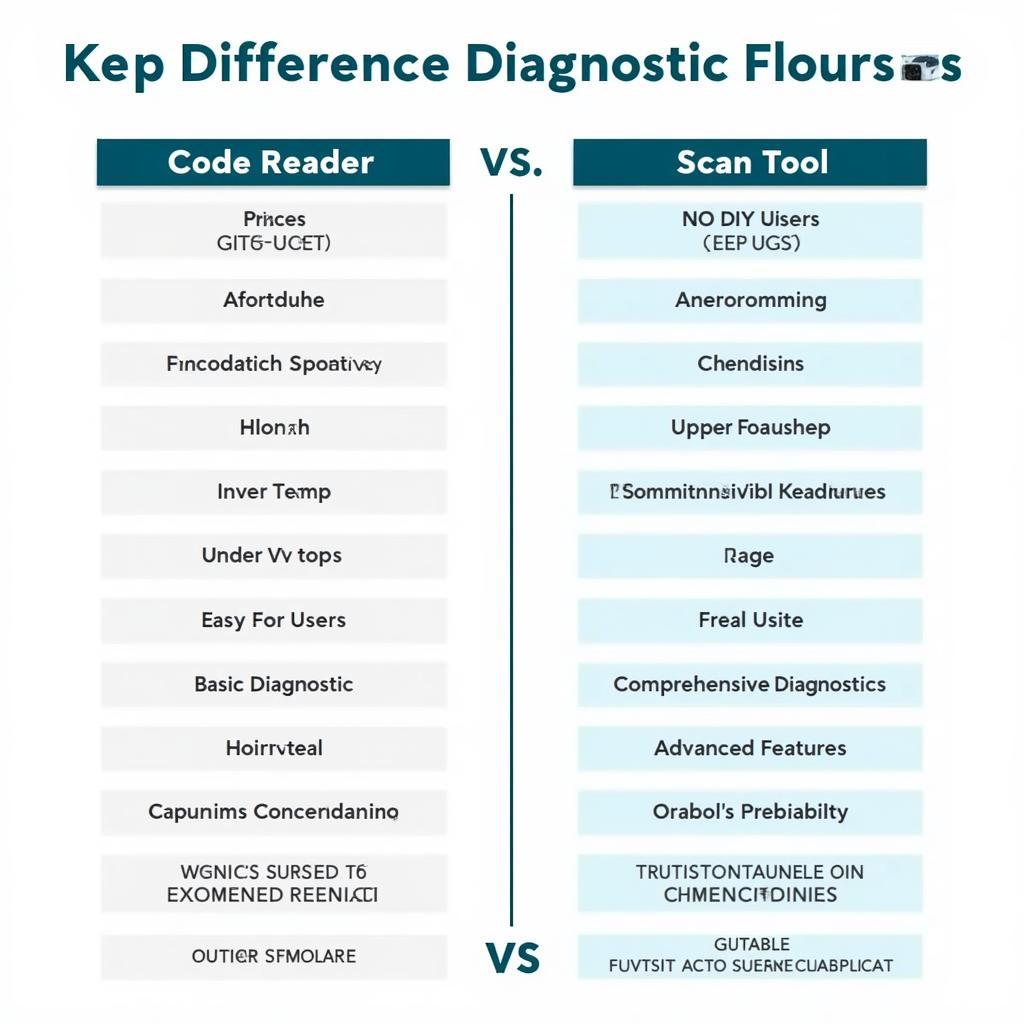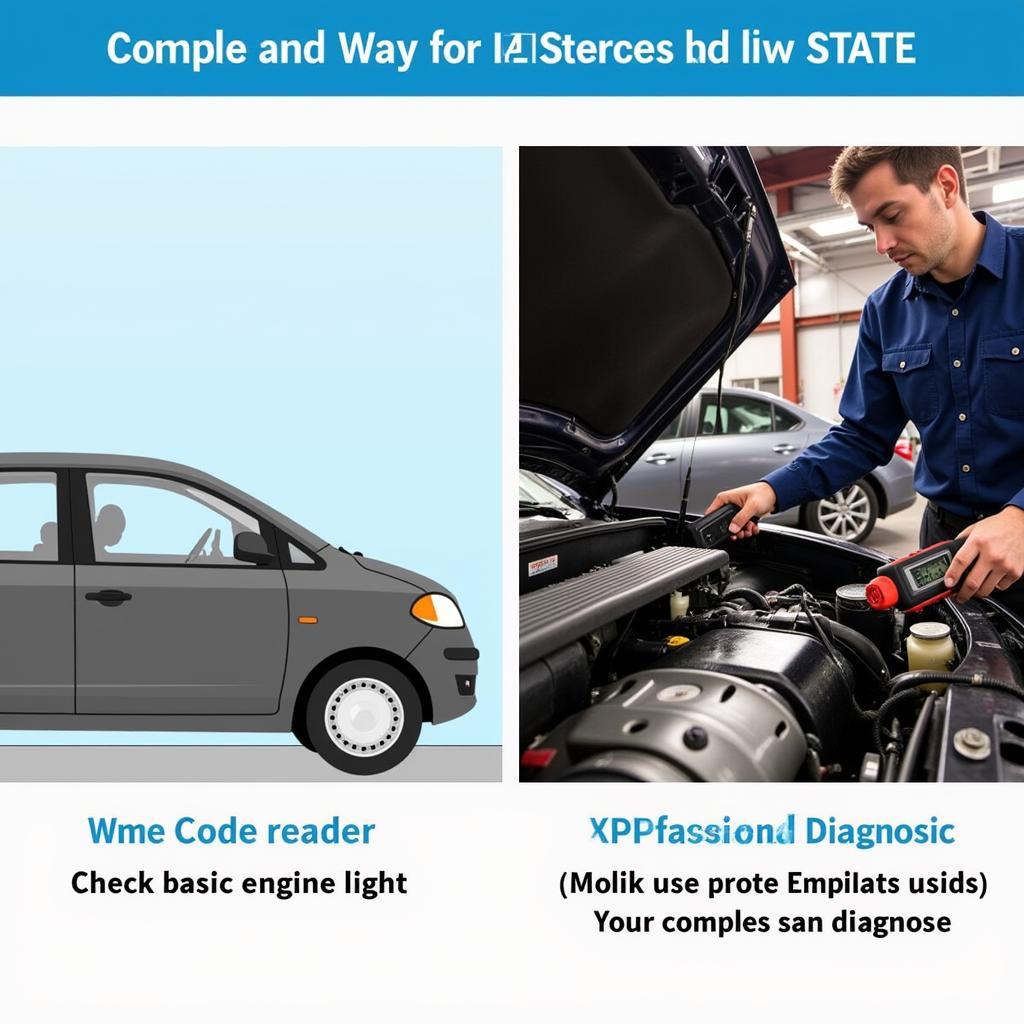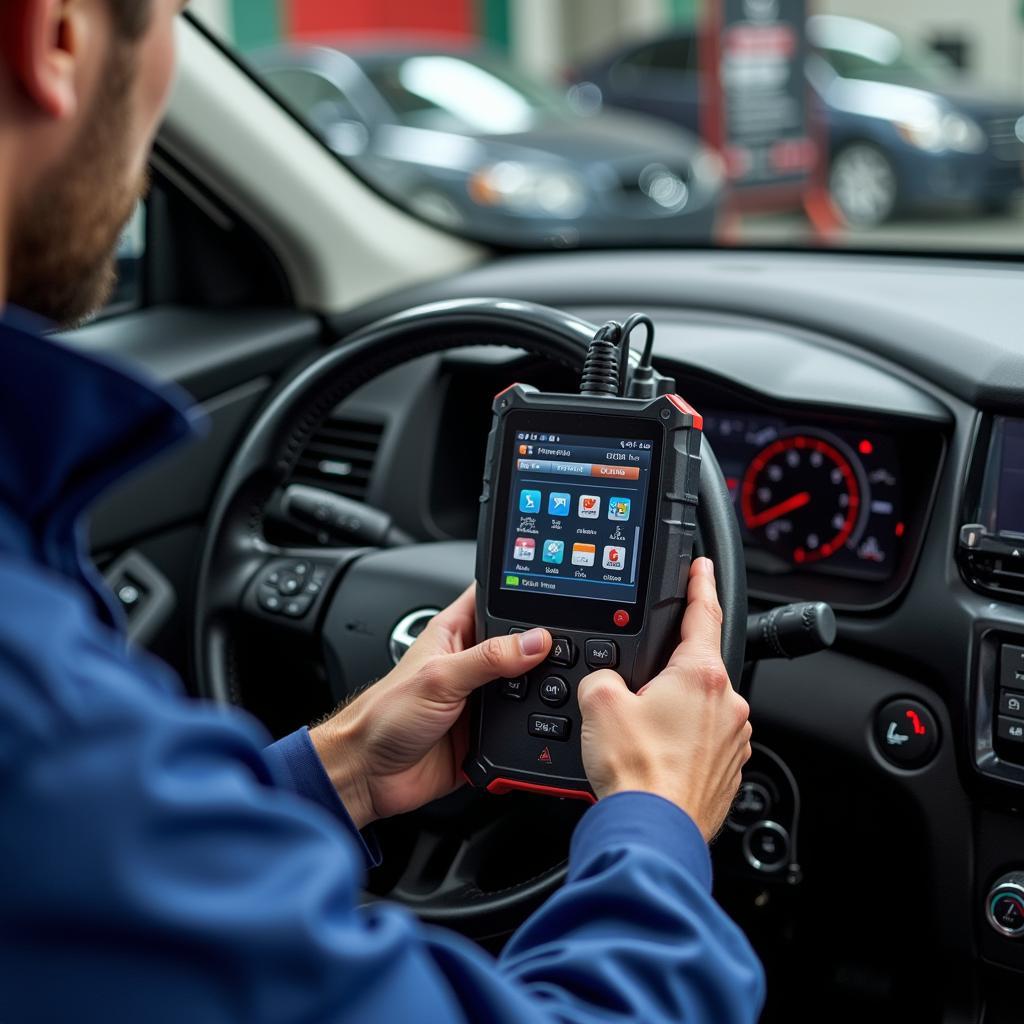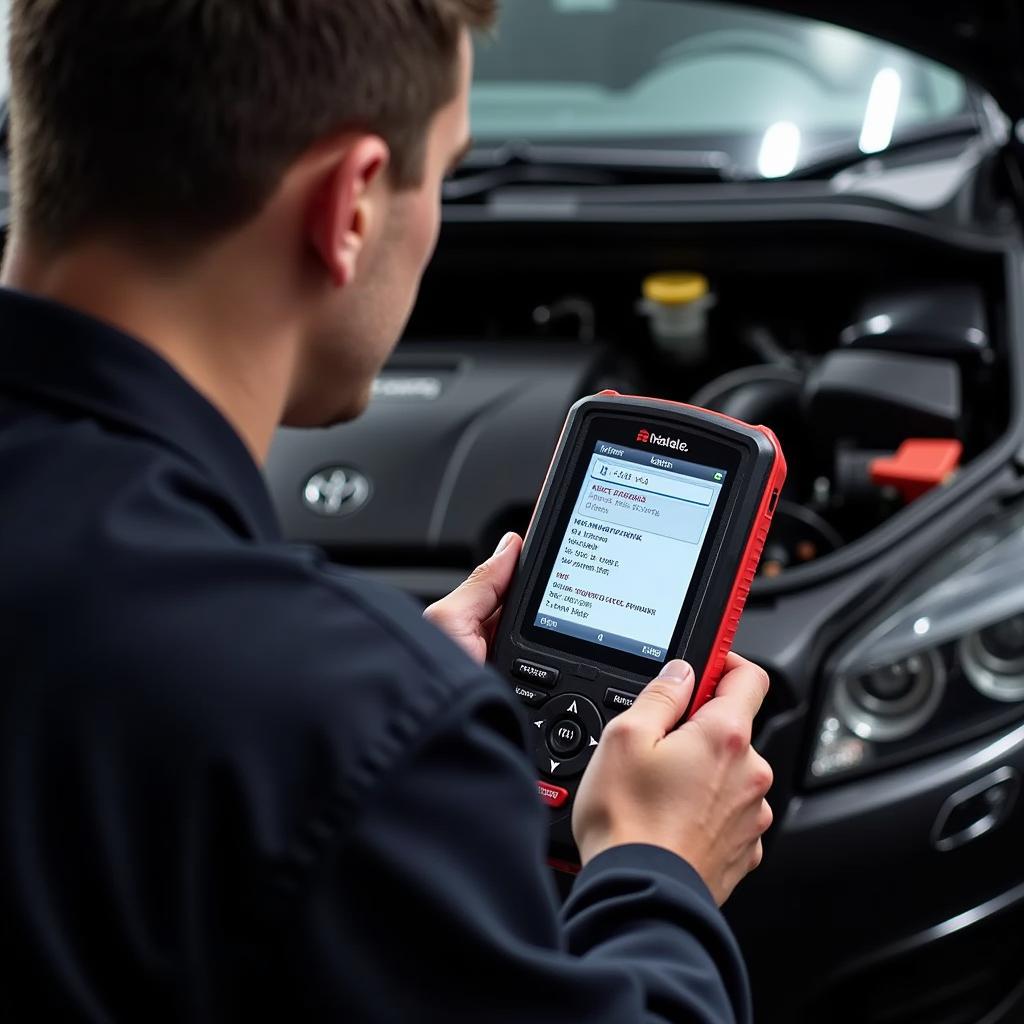When your car throws a dashboard warning light, it can be stressful trying to figure out the problem. Is it something minor or a major engine issue? A diagnostic scan tool and code reader can both help, but knowing their differences is key to getting the right tool for your needs. This article will break down the pros and cons of each to help you make an informed decision.
Understanding the Basics: What Each Tool Does
Before diving into the differences, let’s clarify what each tool does:
-
Code Reader: A code reader, as the name suggests, reads the diagnostic trouble codes (DTCs) stored in your car’s computer (ECU). When a problem arises, the ECU generates a specific code corresponding to the issue. A code reader displays this code, allowing you to understand the nature of the problem.
-
Diagnostic Scan Tool: A scan tool goes beyond just reading codes. It can also access live data streams from various sensors in your vehicle, perform bi-directional controls to test components, and in some cases, even program and reconfigure certain modules.
Diagnostic Scan Tool vs. Code Reader: Key Differences
The core difference lies in their functionality and depth of information:
Code Reader:
-
Pros:
- Affordable: Code readers are significantly cheaper than diagnostic scan tools, making them a budget-friendly option for many car owners.
- Easy to Use: Most code readers are plug-and-play devices with a simple interface, making them user-friendly even for beginners.
- Basic Diagnostics: They can retrieve and clear basic DTCs, giving you a starting point for troubleshooting.
-
Cons:
- Limited Functionality: Code readers can only read and clear codes; they cannot access live data, perform bi-directional tests, or program modules.
- Surface Level Information: They provide the code but no in-depth explanations or troubleshooting guides.
Diagnostic Scan Tool:
-
Pros:
- Comprehensive Diagnostics: Scan tools offer a wide range of diagnostic capabilities, allowing you to delve deeper into the problem.
- Live Data Viewing: You can access real-time data from various sensors, such as engine RPM, coolant temperature, and oxygen sensor readings.
- Bi-Directional Control: Some scan tools allow you to command actuators, like opening and closing valves or activating solenoids, to test their functionality.
- Advanced Functions: Higher-end scan tools offer module coding, programming, and adaptation capabilities, often used by professional mechanics.
-
Cons:
- Expensive: Scan tools, especially professional-grade ones, can be significantly more expensive than code readers.
- Complexity: The extensive functionality can make some scan tools more complex to use, requiring some learning and experience.
 Code Reader vs Scan Tool
Code Reader vs Scan Tool
Which One is Right for You?
Choosing the right tool depends on your needs and budget:
Consider a Code Reader if:
- You want a basic tool to check and clear engine codes.
- You’re on a tight budget.
- You’re comfortable with basic car maintenance and troubleshooting.
For instance, a mini car scanner can be an excellent choice for everyday car owners who want to quickly diagnose and resolve minor issues.
Consider a Diagnostic Scan Tool if:
- You’re an experienced DIYer or mechanic.
- You want in-depth diagnostic capabilities and access to live data.
- You need to perform bi-directional tests or module coding.
- You own a specific car model requiring specialized diagnostics.
For example, if you own a BMW E60, a dedicated scan tool for bmw e60 can provide model-specific diagnostics and advanced functionalities.
 Choosing the Right Tool
Choosing the Right Tool
Beyond the Basics: Factors to Consider
Besides the primary differences, here are some additional factors to consider:
- Vehicle Compatibility: Ensure the tool you choose is compatible with your car’s make, model, and year. Some tools are universal, while others are brand-specific.
- Software Updates: Diagnostic software constantly evolves. Choose a tool that offers regular software updates to ensure compatibility with newer vehicle models and access to the latest features.
- User Interface: Opt for a tool with a user-friendly interface, clear navigation, and easily understandable data display.
- Data Logging: Some tools offer data logging capabilities, allowing you to record and review sensor data over time, which can be helpful for intermittent issues.
“Choosing the right diagnostic tool is like having the right wrench for the job. A code reader is like an adjustable wrench – good for general use, while a scan tool is like a full socket set – offering more specialized tools for in-depth repairs.” – John Smith, Senior Automotive Engineer
Conclusion
While both code readers and diagnostic scan tools serve the purpose of car diagnostics, their capabilities differ significantly. Understanding these differences is crucial in choosing the right tool for your needs and budget.
If you’re still unsure which tool is right for you, don’t hesitate to reach out to the experts at ScanToolUS. We’re here to help you make the best decision for your car maintenance needs. You can reach us at +1 (641) 206-8880 or visit our office at 1615 S Laramie Ave, Cicero, IL 60804, USA.




Pingback: Best Scan Tool for E60: Diagnose and Fix Like a Pro - Car Scan Tool